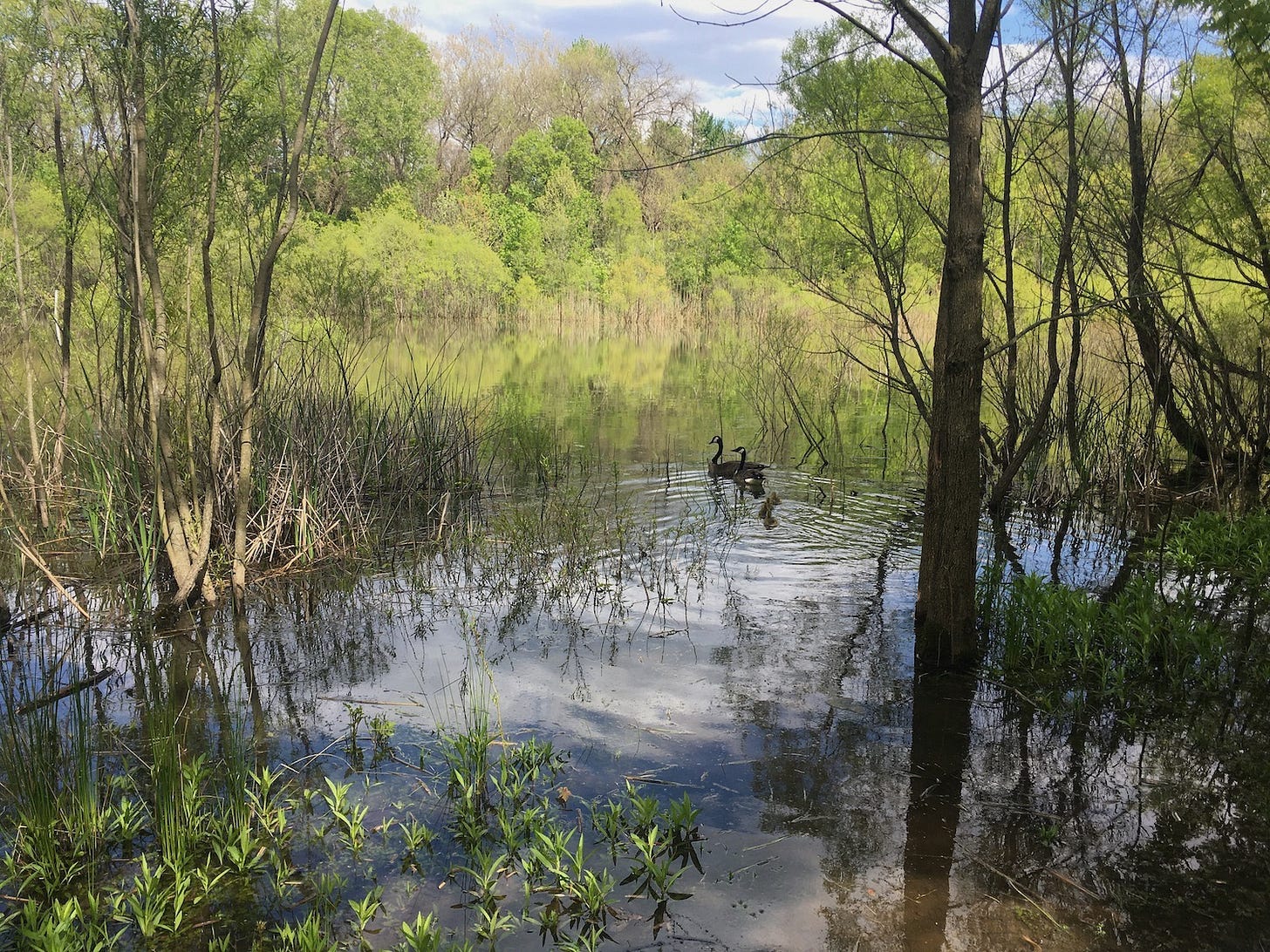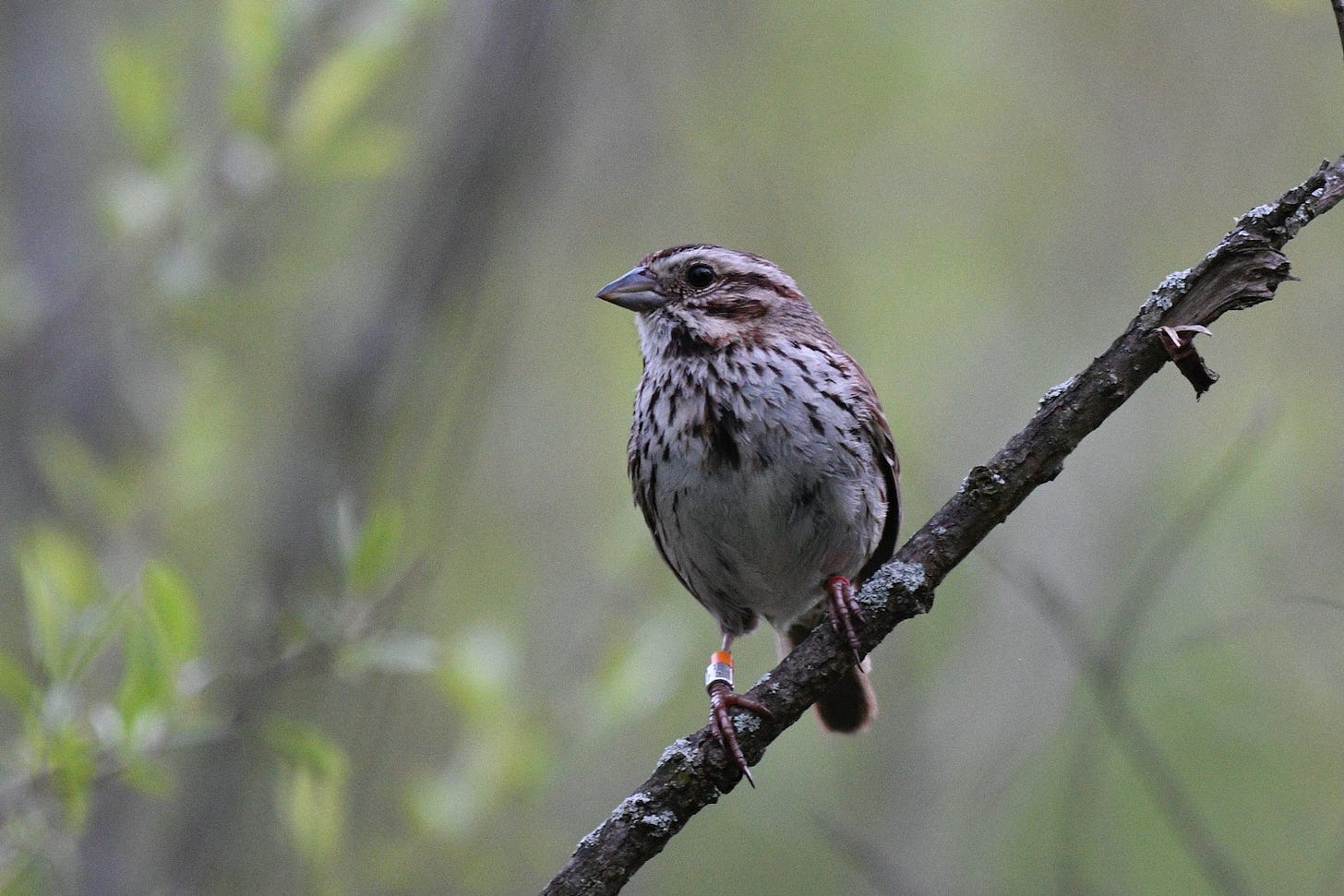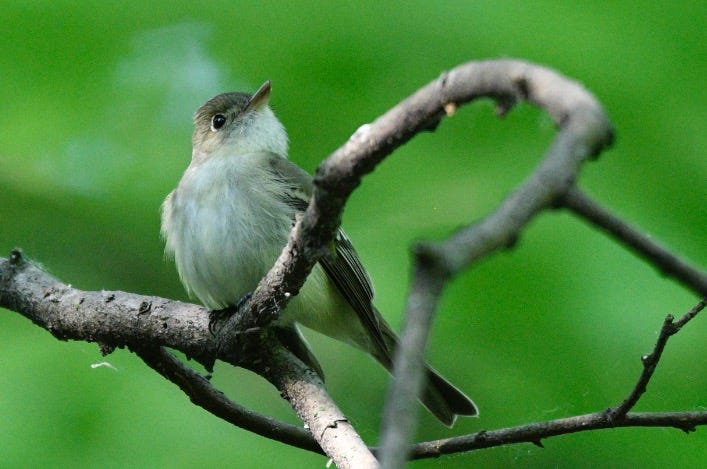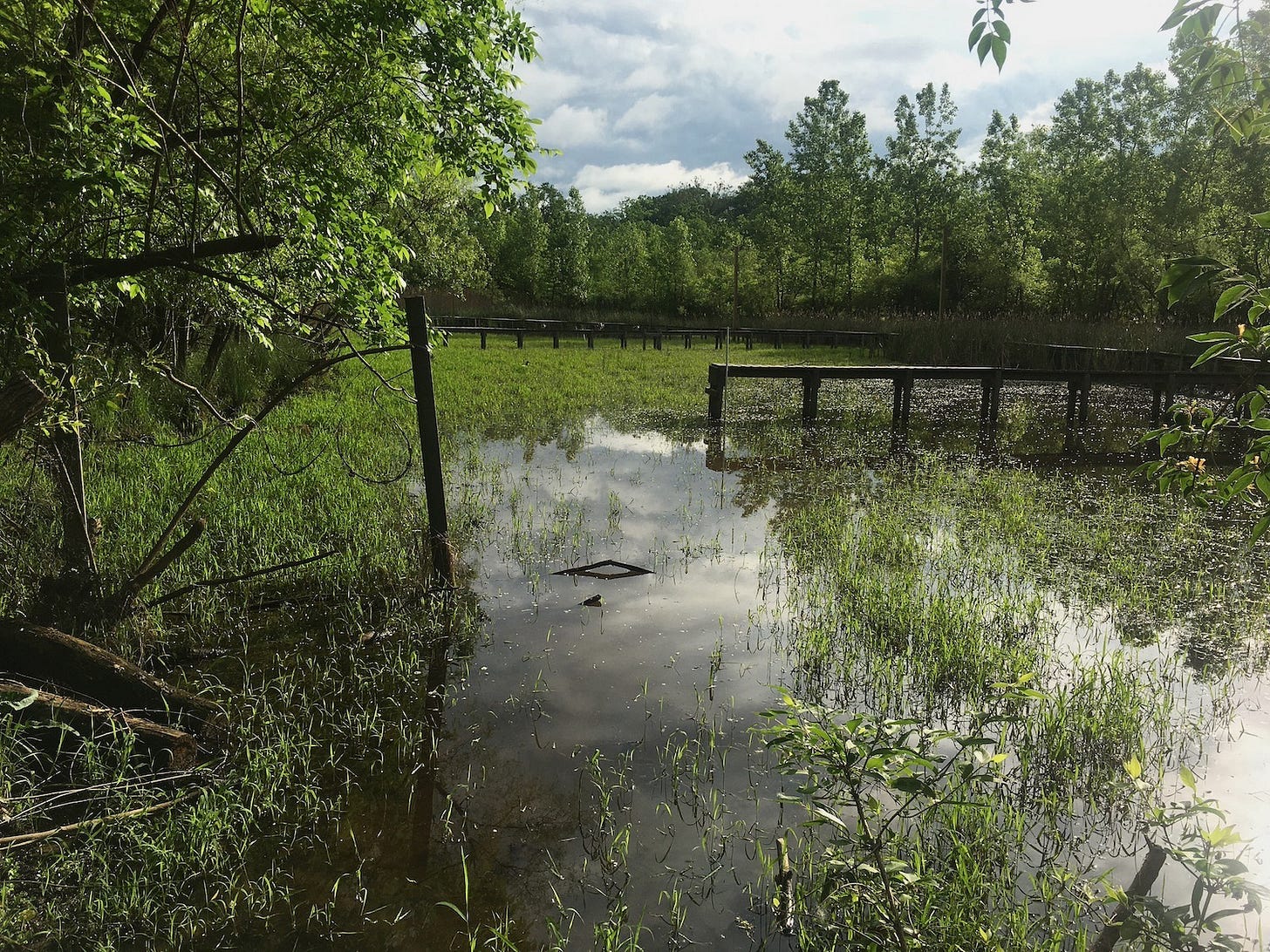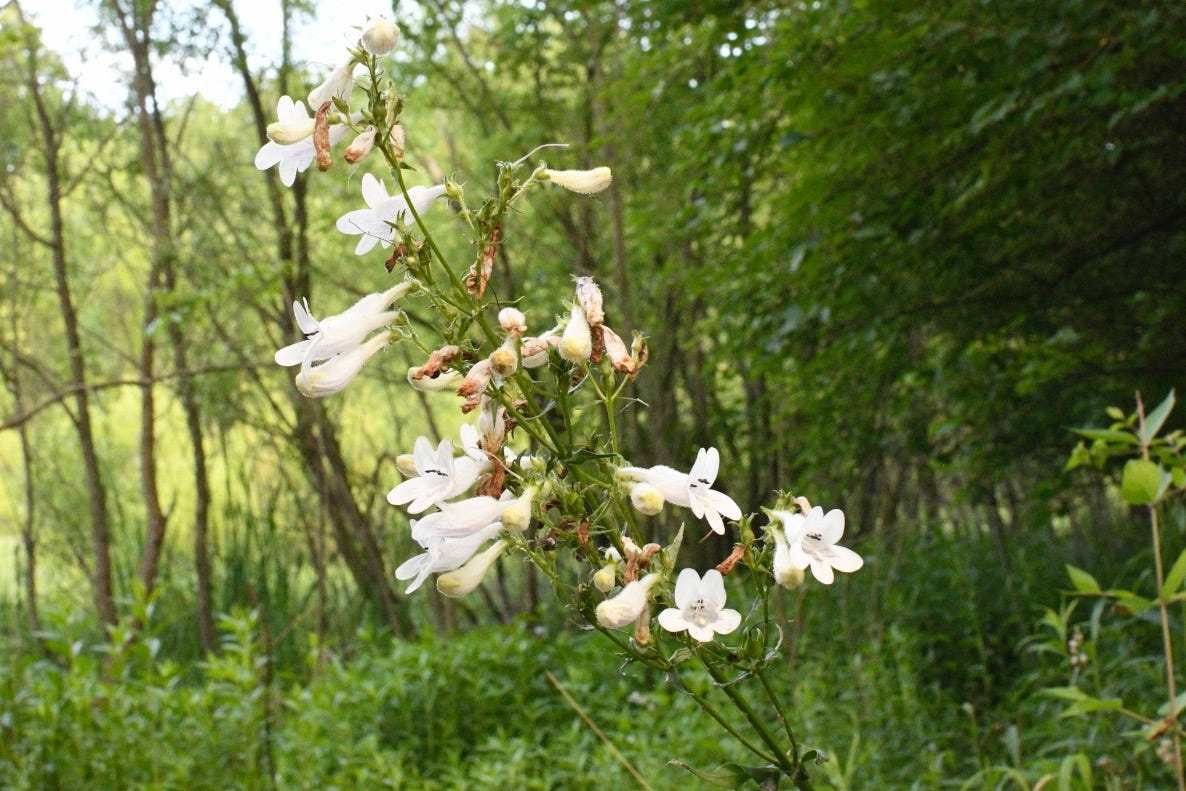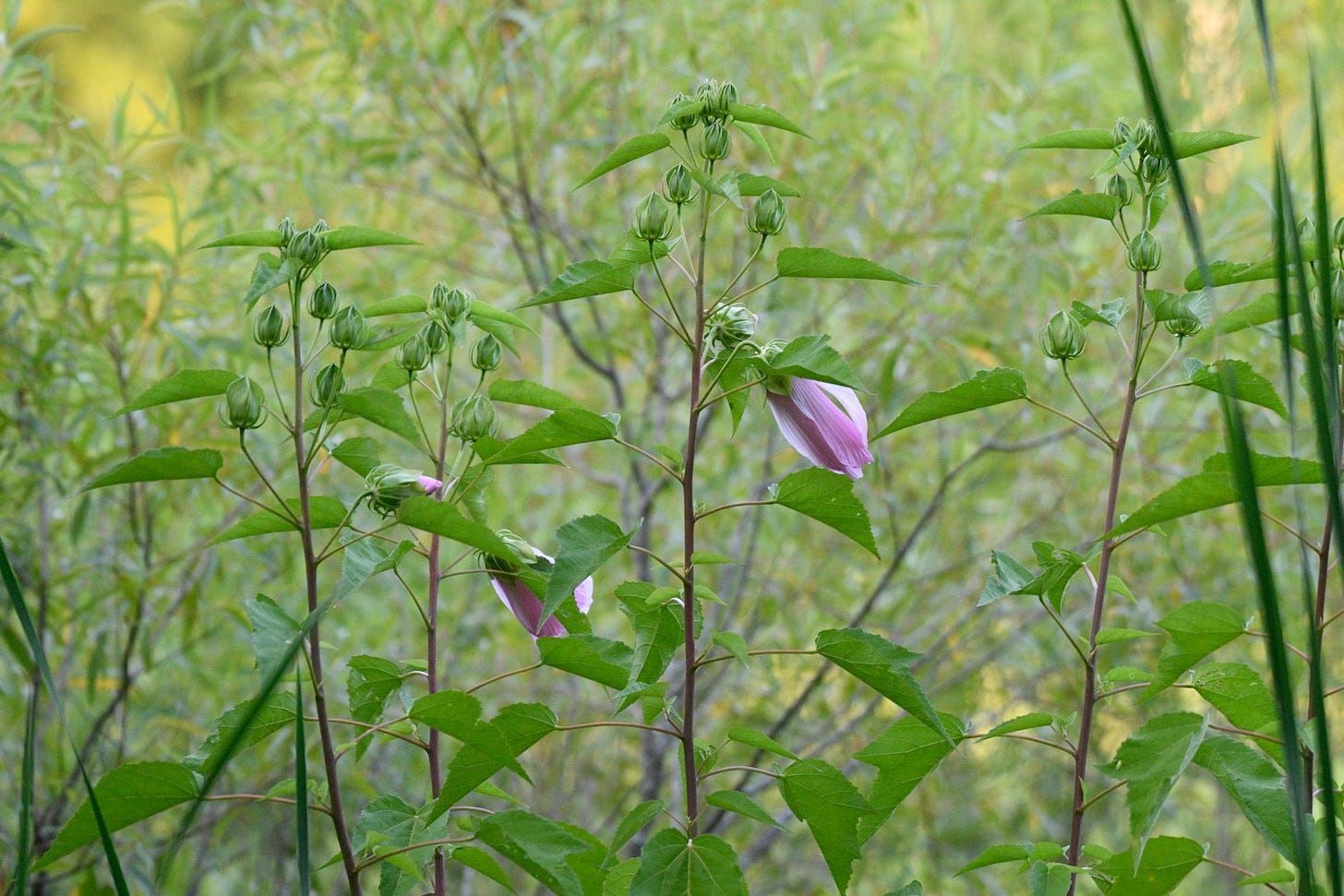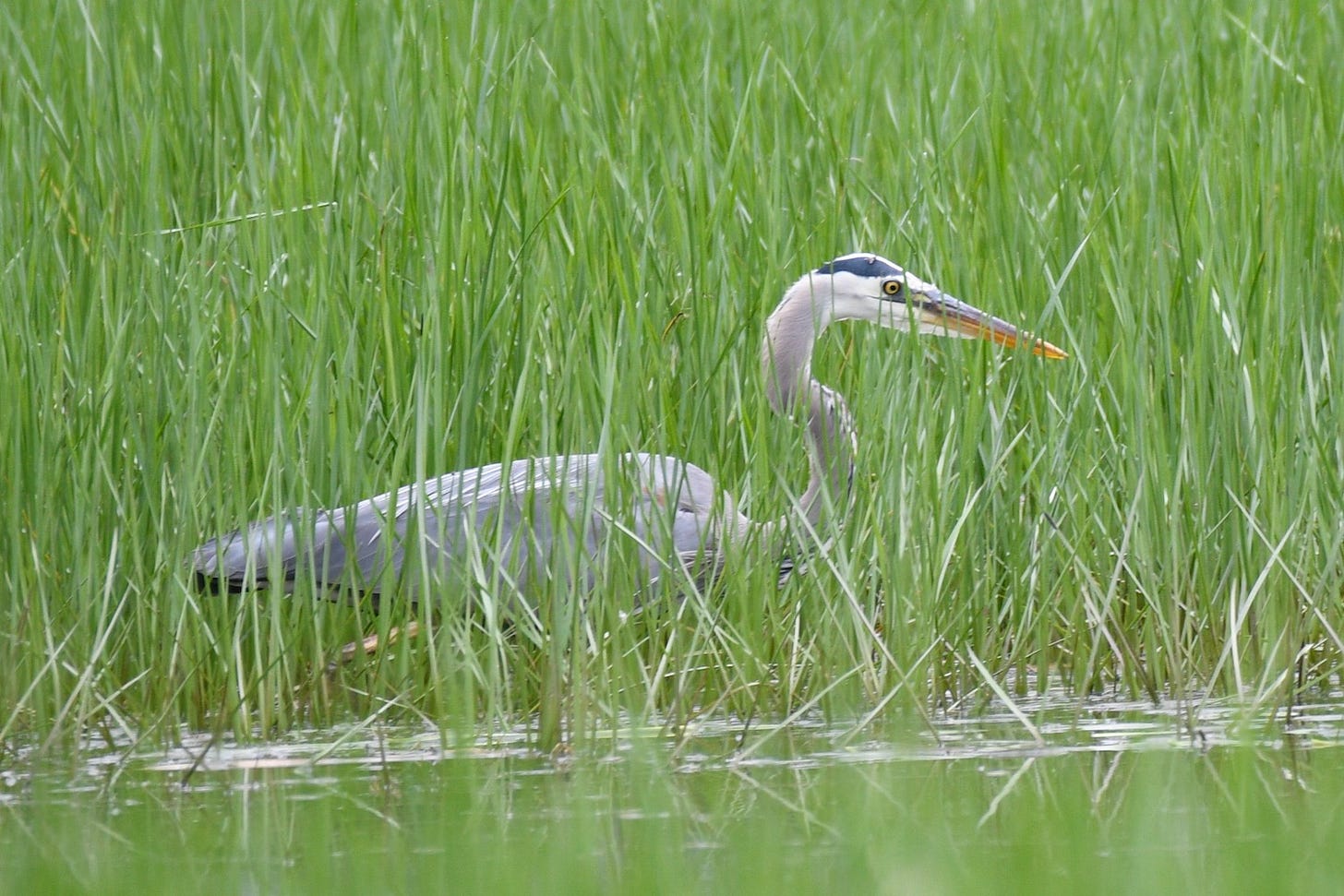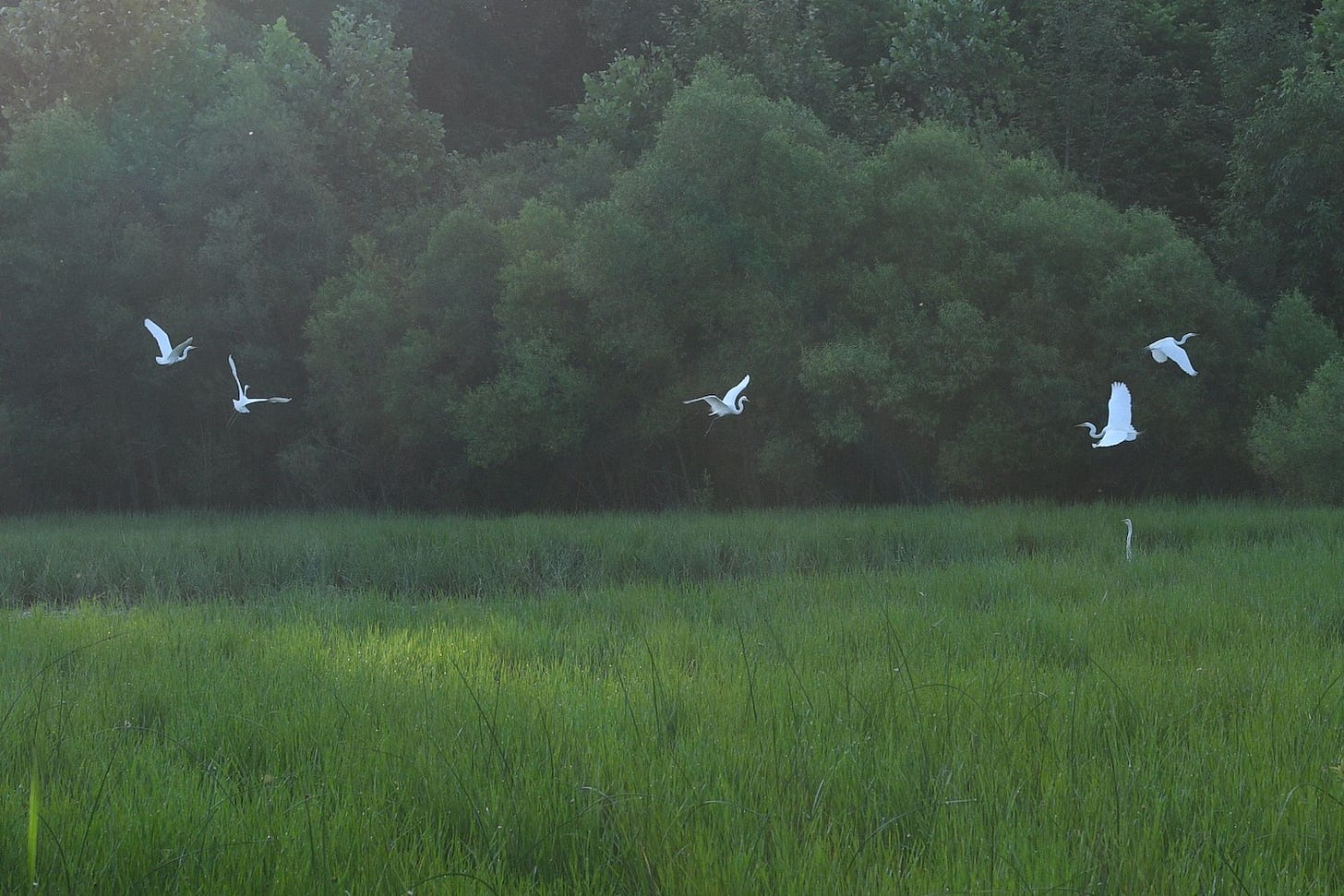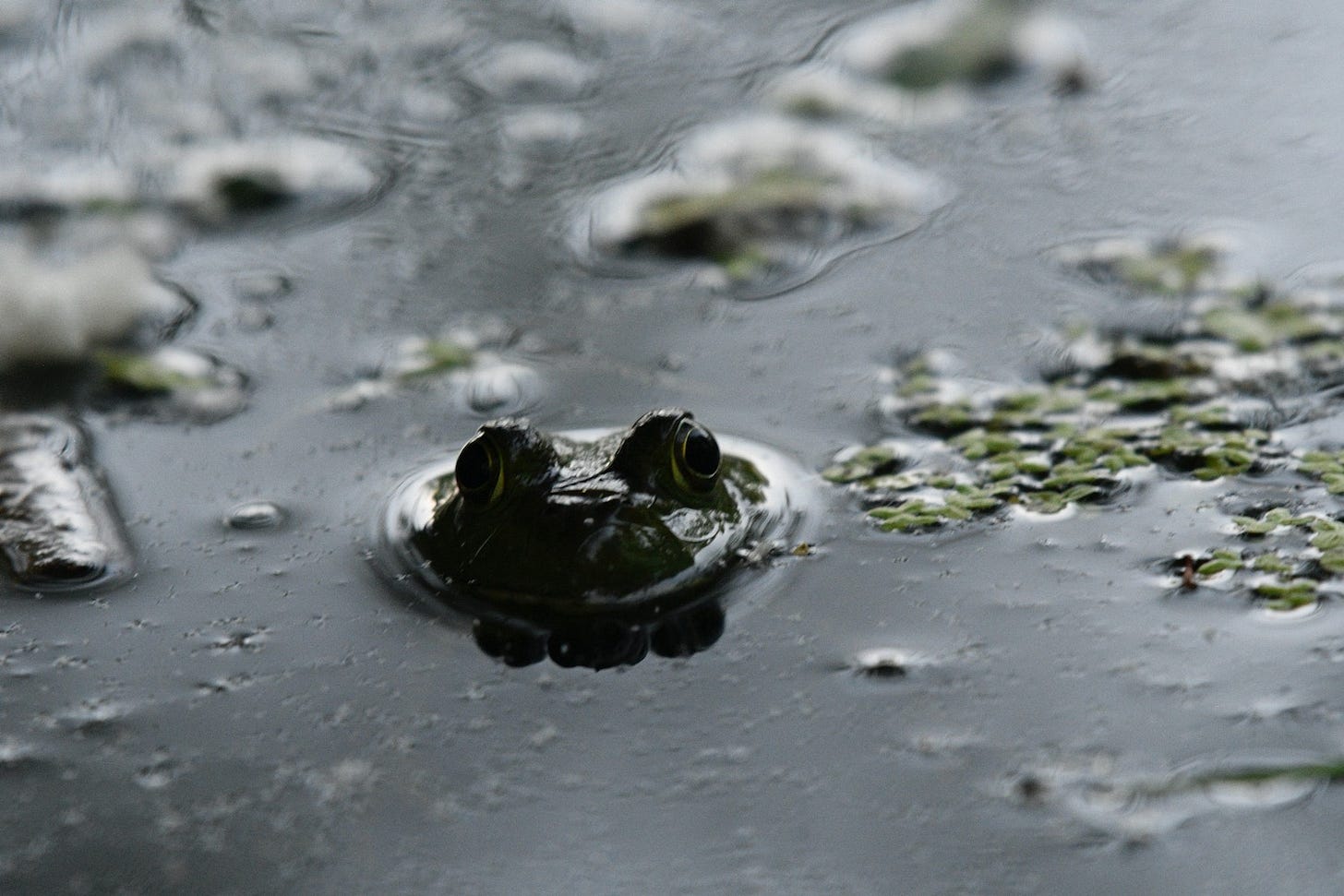The Conference of the Wading Birds
...and the active transportation commutes by the Olentangy that made me a bird lover
During the three summers I lived in Clintonville, Columbus, Ohio, I would sometimes wonder why I seemed so much more prone to mosquito bites than all of the rest of my friends. Then I would remember that I walked around a marsh nearly each day at dawn and dusk… This post is dedicated to the stunning Olentangy Wetland Research Park, which was especially instrumental in causing my passion for wild nature to develop and mature.
Disclaimer. For most of the time I lived in south Clintonville, I had no camera except my cherished iPhone SE, and when I finally did purchase my first “real” camera and lens, it didn’t come with the immediate implantation into my brain of the knowledge and skill needed to wield it successfully. In this post, I have only used photographs taken within the timespan that it concerns (2019-21). Thus, the photographic content comes nowhere close to representing the full biodiversity that I experienced during those years. I would do slightly better – slightly – when I returned to visit my beloved wetland in subsequent years, but that is for a future installment of Nonmotorized Trails.
The Move That Slowed Me Down…
By the time of my first attempt at digital nomadism, I had spent nine years living in downtown Columbus, Ohio. It was while living in the downtown metropolis that I effectively stopped driving and eventually became car-free as a way to eliminate an extraneous source of stress and anxiety from my life. I was more fit back then, I reckon. Whether on foot or on bike, I moved at a fast clip, often breaking into a sprint to try to beat the traffic light. I stayed aware of my surroundings more for safety than meditative mindfulness. There wasn’t much that brought such interest or enchantment that it stopped me in my tracks to watch and listen.
That all changed when I returned to Columbus and settled in the neighbourhood of Clintonville. I found out only later that the southern edge of the neighbourhood overlapped with the hottest hipster real estate market in the United States at the time. Well, I must confess that I had better access to artisan coffee roasters, craft breweries, and yoga studios when I lived downtown, but Clintonville amazed me with treasures I never knew existed only a few miles north in my own city – tree-lined ravines, herds of white-tailed deer, great blue herons fishing at the edge of the Olentangy River, perfectly spherical concretions left as relics from the landscape’s Devonian past… sanctuaries of wild nature that I never expected to see within city limits (I intend to dedicate a future instalment of Nonmotorized Trails to my earliest experiences in Clintonville and my self-dubbed “Operation Ravine Quest”).
The upshot was that Clintonville slowed me down. Sure, I had easy access to the Olentangy Trail and a significant reduction of the number of traffic lights in my life. But I had wildlife to stop and watch, flowers to literally stop and smell. And what slowed me down most of all were the birds, for it was while living in Clintonville that I became a dyed-in-the-merino-wool bird-noticer.
Re-Sparked by Herons and More
The tall, stately, dinosaurian great blue heron (Ardea herodias) had already become my spark bird – I never forgot the charming resident heron at Franklin Park (Frank) – and the A. herodias population of Clintonville would spark my attention to birds again and again, until at last the sparks became an undying flame. I was stunned to discover how many herons hunted along the Olentangy River, and I couldn’t ride or walk on the riverside trail without making at least one stop to look for them.
When I saw one, which was often, I would pause for a spell and watch the heron as quietly and intently and the heron watched the water for its prey. I got to know the birds’ hunting territories and a bit of their personalities. Some were more skittish, some more calm, some more aggressive and domineering. When the elegant great egrets (Ardea alba) returned for the summer, the dynamics between the herons and egrets could be particularly fun – although perhaps less so for the egrets, who usually bore the brunt of the territorial peevishness of the great blues.
The tall Ardeids were hard to miss, but it was also thanks to them that I began to notice the smaller birds too – the robins, cardinals, Carolina chickadees, tufted titmouses (or titmice? or [expletive-deleted]-mouses?), white-breasted nuthatches, the delightfully tiny and flighty golden-crowned kinglets and blue-grey gnatcatchers… all these and many more.
Sometime in my 20s, I recovered the dinosaur obsession that was seized from me in my childhood when my family converted to young-Earth creationism and forced me to give up belief in evolution on pain of hellfire and damnation. As any child knows, a large part of the mystique of the non-avian dinosaurs lies the fact that they’ve been gone for millions of years — and I now believe that a large part of the mystique of birds lies in fact that they are dinosaurs (no, not “evolved from” dinosaurs, but real-life extant species of theropod dinosaurs). When I looked a bird in the eyes, I couldn’t shake the sense that I was gazing into the wisdom of the ages, or at least into a lineage hailing from deep into the Mesozoic, which experienced the Alvarez impact event and lived to tell the tale.
To get to know the birds even better, I got a pair of binoculars (affectionately known as “bins” or, in my preferred nomenclature, “pair-o-sights”). In doing so, I slowed myself down even more. By this time in my life, I was firmly set in my ways as a non-driver and needed no more convincing. Nonetheless, I discovered two new considerable advantages of being a pedestrian instead of a motorist: (1) it’s easier to notice birds; (2) it’s relatively easy to make a hasty decision to stop and watch birds without needing to find a parking spot, blocking the road, or putting others at risk of rear-end collision. I couldn’t go shopping at Lucky’s with a birding detour at Glen Echo, couldn’t pick up a book at the library without a birding detour to the Whetstone Park Ravine or the newly established Whetstone Prairie, couldn’t walk or cycle to my job at The™ Ohio State University without stopping for a while in my favourite place of all: the Wilma H. Schiermeier Olentangy River Wetland Research Park.
Ohio’s Urban Wetland of International Importance
Despite being created as an experimental project only in 1994, the 52-acre Olentangy Wetland Research Park became Ohio’s first (and so far only) Ramsar Site, designated it as a Wetland of International Importance. It’s right in the middle of the largest city in the state, but if you orient yourself and squint the right way, you would never realise it. Most impressively, if you visit at the right time, you just might find that the sounds of nature dominate the soundscape — wind rustling the leaves, birds singing, birds sounding their alarm calls in the presence of a large bipedal mammalian intruder. In the last instalment of Nonmotorized Trails, “A Sunny Winter Interlude,” I wrote about the omnipresent traffic noise that is a blight on the otherwise beautiful Scioto Audubon Metro Park. The same could be said about most of the length of the Olentangy Trail, which closely parallels a major interstate freeway. The Wetland Research Park is sometimes plagued by traffic noise too — but not nearly as often or as severely as any noise-sensitive urban dweller would expect.
The wetlands kindled a special delight in dragonflies and damselflies, and it was hard not to be impressed during the rare surprise encounters with a snapping turtle. Thanks to diligent restoration efforts, the understory was (and is) less dominated by invasive Japanese honeysuckle than most parts of the Olentangy Trail, and it was much fun to see greater diversity in vegetation, including the occasional striking flower, such as the extraordinary flag iris.
The Annual Conference of the Wading Birds
…but it would always be the birds whom I loved the most. It was amidst the wetlands that I learned the unmistakable song of the red-winged blackbird (Agelaius phoeniceus) and came to hear it as the earliest harbinger of spring, and it was there that I first realised the thrill of glimpsing a warbler on a pit stop during its long migration journey. I came to cherish all the native resident and migratory birds, yet in the years I lived in Clintonville, the Ardeids continued to feel like my closest soulmates of all.
It was not an everyday pleasure to glimpse a great blue heron hidden in the marsh instead of standing prominently at the river’s edge. It was a much more common treat to see a great egret in the wetland, and on particularly special occasions, I could see two egrets at once. But I will never forget the morning in the summer of 2019 when I saw six egrets all moving about – six distinct graceful and poised white shapes that could just be glimpsed through the foliage. The next day, I noticed that there were also at least three great blue herons. And then, a few days later, they were all gone. I would refer to the extraordinary event as the Conference of the Wading Birds.
In the summer of 2020, I came armed with a pair of binoculars and a bit more knowledge of heron development, yet the Conference of Wading Birds again caught me off-guard (was this an annual event?!). There were at least five GBHs that second year, and some looked very young — presumably recently fledged – and through my bins I noticed at least one green heron (Butorides virescens) in attendance too. It lasted less than a business week, and then it was over.
By the time of the summer of 2021, my last summer in Clintonville, I had a “real” camera and telephoto lens — not that it helped me to get all of the attendees of that year’s Conference in the frame at once. The Conference of the Wading Birds was egret-dominated that year (although there was at least one representative of both the blues and the greens too). Early in the morning, on a few consecutive days, I counted a record-breaking nine great egrets, but just past 7 o’clock most would fly away to (I assume) attend the first morning breakout session. And, at the end of the business week, they flew away not to return…
Impending Departure…
Shortly after I moved into my flat near the Olentangy River, I remarked to a friend that I never thought I could become lonely there with so many birds around. Less than a year later, COVID-19 arrived in Ohio, and the subsequent lockdowns proved me correct: I simply never got lonely there with so many birds around, with saunters around my beloved wetland at least twice daily (I felt extremely fortunate that Ohio never placed restrictions on the amount of time that residents could spent outdoors hiking, biking, birding, and so on).
Okay, I just said something positive about a time that was hell for many people, so it is a mere matter of social propriety that I say something dark: in the modern era, the dark side of ecological enchantment is ecological anxiety or ecological grief; we fear the loss of what we love the most. And so it was that I did face emotional difficulties during the pandemic, but they had less to do with the pandemic than the news and issues that it buried, including grave declines in bird populations coupled with increasingly dire threats. “Decline of the North American avifauna” was published in Science in 2019, sounding the alarm that 29 percent of wild bird populations had been lost in less than 50 years. Meanwhile, President Trump was rolling back environmental law after environmental law, including the Clean Water Act’s protection of wetlands and the Migratory Bird Treaty Act’s protection of birds from “incidental take” (i.e. nearly anything except direct and intentional killing of birds). Meanwhile, birds just weren’t on the agenda of the Left (which had difficulty conceding, for example, that turbine-caused bird mortality is not actually a lie invented by fossil fuels companies). No one, it seemed, was for the birds.
Eventually I came to the conclusion that I shouldn’t waste too must time watching the news, and instead get out watch birds as much as I can while they still exist.
For the next several installments of Nonmotorized Trails, I will depart from Columbus and go international – which is exactly what I decided to do when European borders reopened in the summer of 2021. If the pandemic and eco-anxiety had led me to any conclusion, it was that I did not want to be imprisoned in a city for whatever time I and the planet had left – not even a city with a beautiful and inspiring Ramsar Site just across the river and along the bikeway. So I packed a carry-on bag and headed back where it was possible to find a small rural village where one could live car-free…



